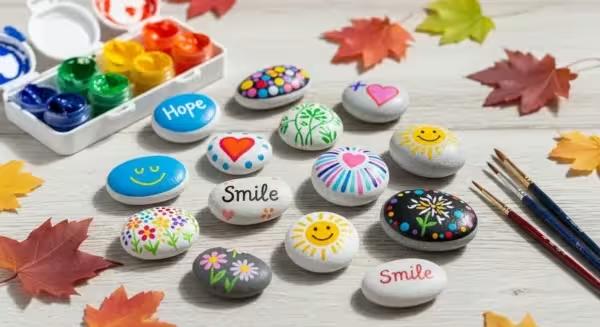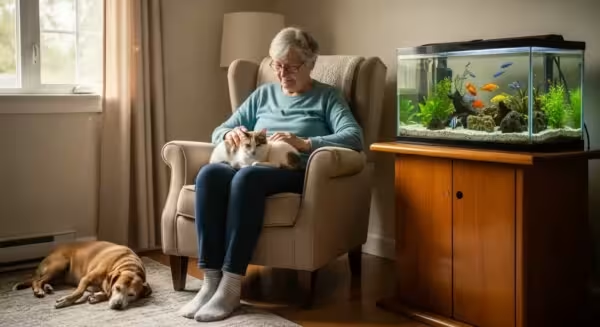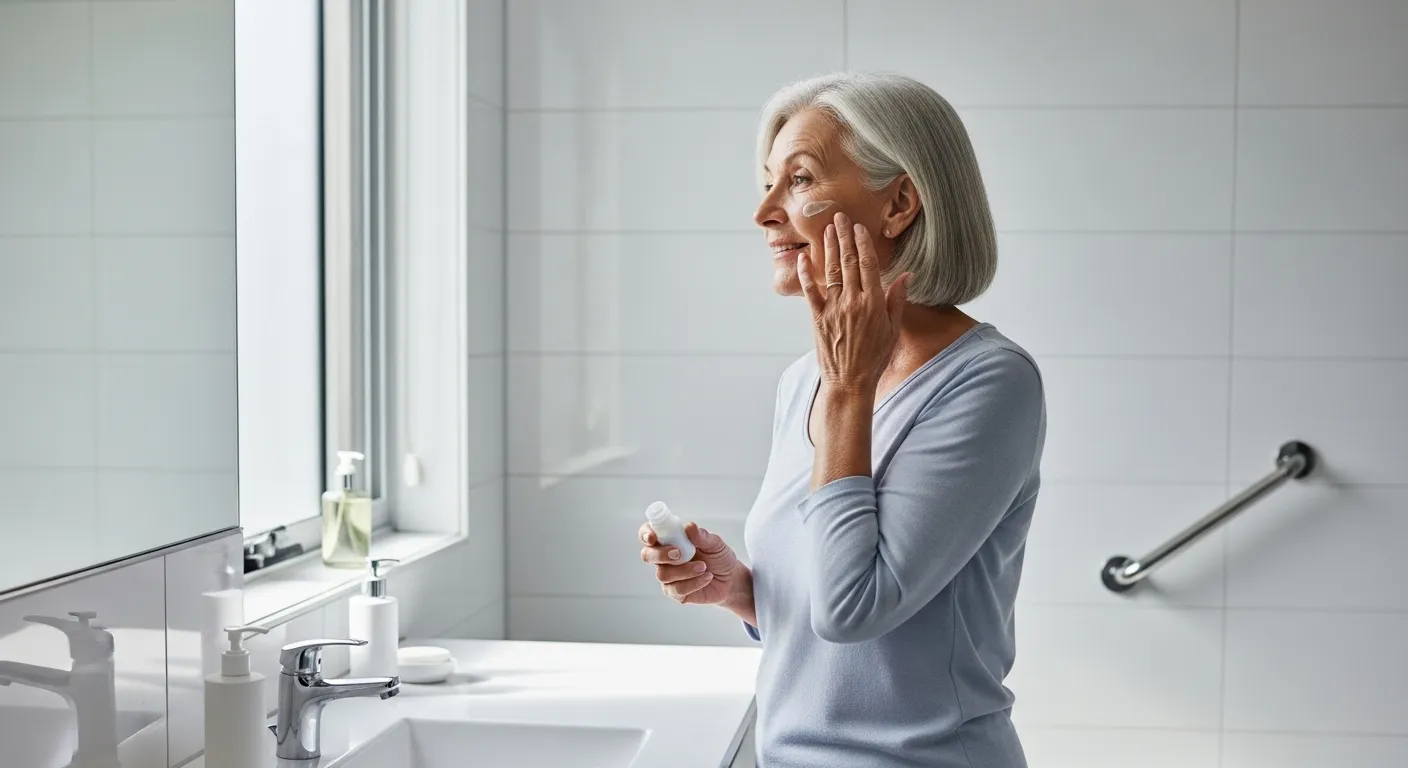
Introduction: Prioritizing Your Health with Gentle Skin Care
As we age, our bodies change, and so does our skin. You may have noticed more fine lines, a bit of dryness, or a few new spots that weren’t there before. These changes are a natural part of a life well-lived. Taking care of your skin after 60 is not about chasing an unrealistic vision of youth; it’s about health, comfort, and feeling your best. Healthy skin is our body’s first line of defense against the environment, and keeping it strong is a vital part of your overall wellness journey.
Think of your skin as a protective shield. When it’s healthy, it helps regulate your body temperature, protects you from germs, and plays a role in your sense of touch. A simple and consistent skin care routine can help maintain this barrier, prevent discomfort like itching and dryness, and even boost your confidence. This guide is designed to provide practical, safe, and effective advice to help you nurture your skin, so it remains healthy and resilient for years to come. We will focus on gentle practices that support your skin’s natural functions, emphasizing that the goal is a comfortable and healthy glow, not a wrinkle-free complexion. Prioritizing your skin’s health is a wonderful act of self-care that contributes directly to your quality of life and independence.
—
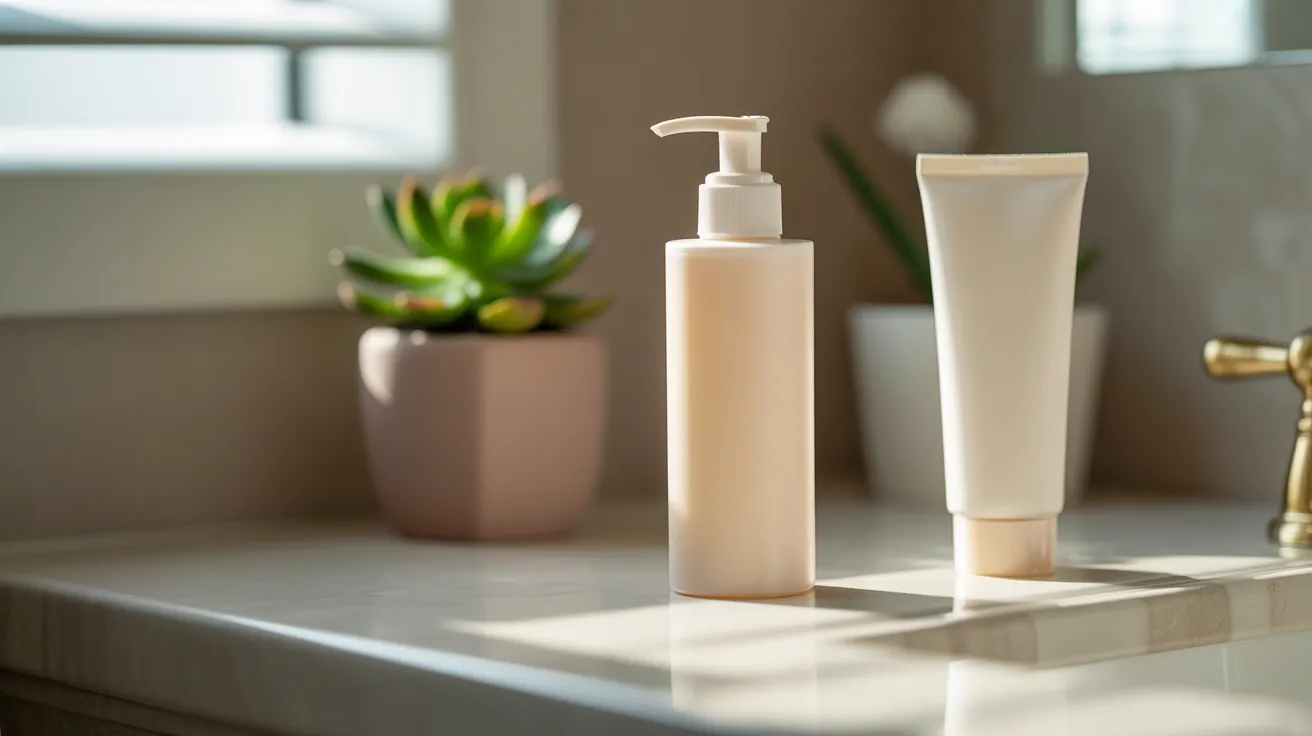
Understanding the Health Benefits (and Any Risks) of a Senior Skin Care Routine
Adopting a dedicated skin care routine in your senior years offers significant health benefits that go far beyond appearance. Our skin becomes thinner, produces less natural oil, and repairs itself more slowly as we age. A thoughtful routine directly addresses these changes, promoting both physical health and emotional well-being.
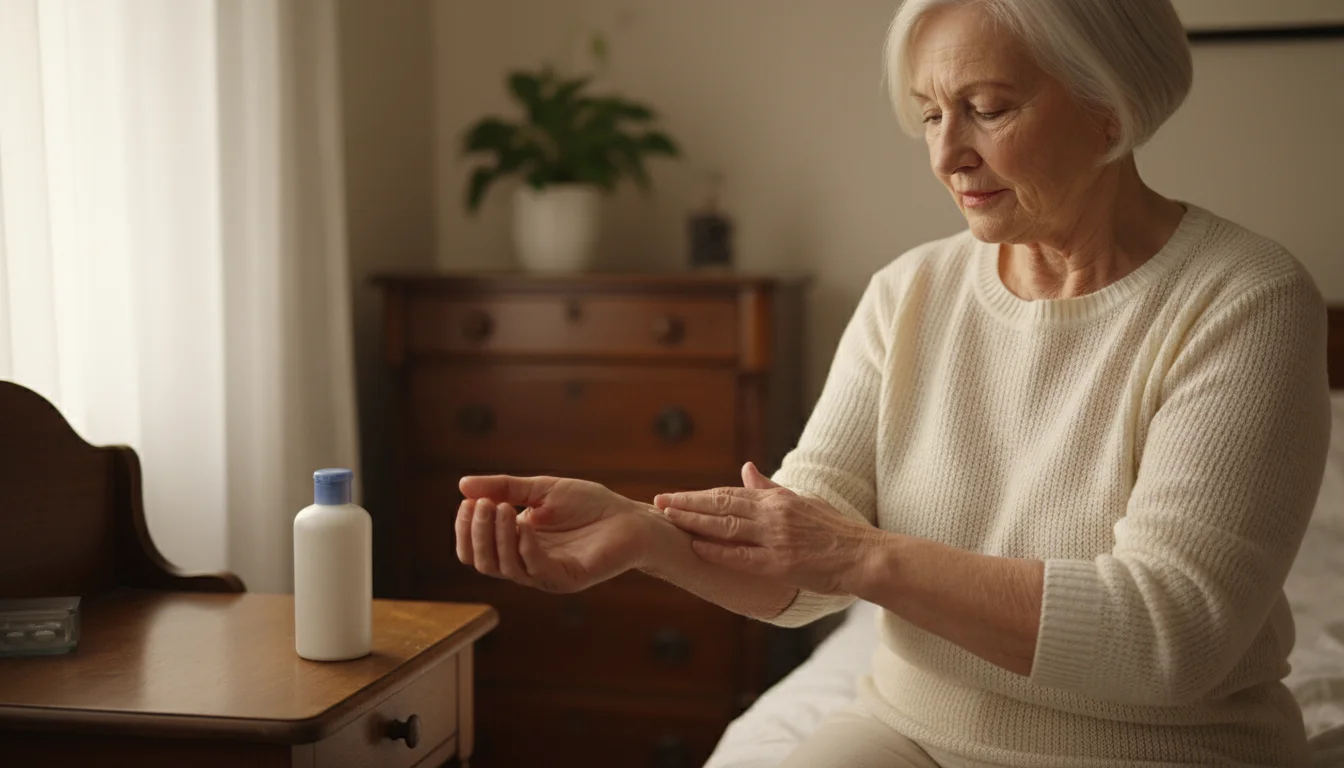
The Health Benefits of Nurturing Your Skin
1. Enhanced Protective Barrier: Your skin, or epidermis, is a crucial barrier against bacteria, viruses, and other pathogens. As we get older, this barrier can weaken. Regular moisturizing helps to reinforce it, keeping it supple and intact. A strong skin barrier can reduce the risk of skin infections, which can sometimes be more serious for older adults. Authoritative health information from the National Institute on Aging (NIA) emphasizes that dry, cracked skin can be a portal for germs.
2. Prevention of Discomfort: Dryness is one of the most common skin complaints among seniors. It can lead to persistent itching (pruritus), which can be intensely uncomfortable and even disrupt sleep. A simple routine of gentle cleansing and consistent moisturizing can alleviate this dryness, preventing cracking, flaking, and the frustrating cycle of itching and scratching.
3. Early Detection of Health Issues: When you pay regular attention to your skin, you are more likely to notice changes. This includes new moles, sores that don’t heal, or unusual spots. Early detection is absolutely critical for successfully treating skin cancers like melanoma. Your daily senior beauty routines become a form of self-monitoring that empowers you to seek medical advice promptly.
4. Improved Circulation and Healing: Gently massaging moisturizer into your skin can help stimulate blood flow to the surface. Improved circulation brings more oxygen and nutrients to the skin cells, which can support the body’s natural repair processes. For minor scrapes or bruises, healthy, well-nourished skin may heal more efficiently.
5. Boosted Emotional Well-Being: The simple act of a daily self-care ritual can be calming and grounding. Taking a few minutes each day to care for yourself can reduce stress and improve your mood. When your skin feels comfortable and looks healthy, it can also provide a significant boost to your self-esteem and confidence. For more on the connection between physical and mental health, you can consult the National Institute of Mental Health (NIMH).
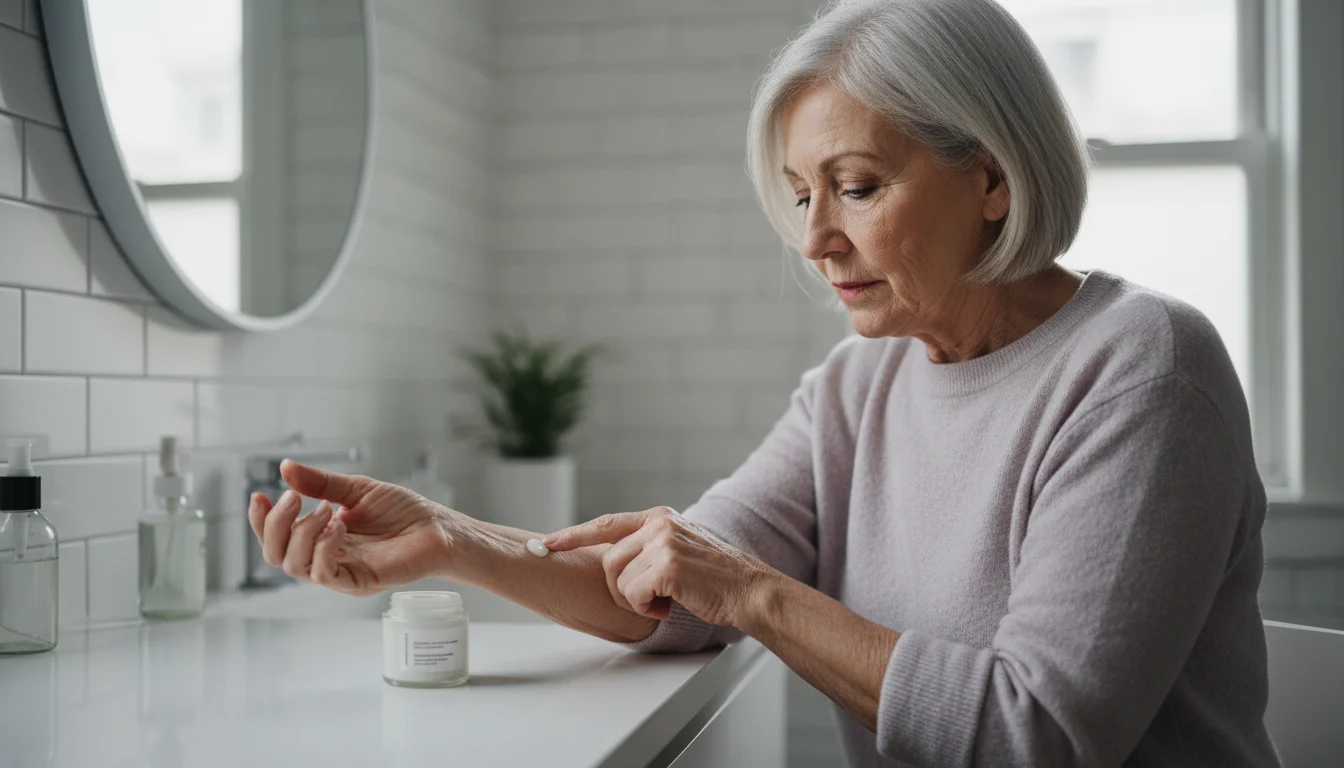
Potential Risks and How to Avoid Them
While a gentle skin care routine is overwhelmingly safe, it’s important to be aware of a few potential risks:
Allergic Reactions or Irritation: Mature skin can be more sensitive. Introducing new products, especially those with strong fragrances, dyes, or complex chemical ingredients, can sometimes cause redness, itching, or a rash (contact dermatitis). Always patch-test a new product by applying a small amount to your inner arm and waiting 24-48 hours to see if a reaction occurs.
Over-Exfoliation: The desire for “glowing” skin can lead some to use harsh scrubs or chemical exfoliants too often. For senior skin, this can be damaging, stripping away its natural oils and weakening the protective barrier. It is best to avoid abrasive scrubs and consult a dermatologist before using products with acids like glycolic acid.
Sunscreen Misuse: While sunscreen is a cornerstone of healthy skin, relying on it alone can provide a false sense of security. It’s crucial to also seek shade, wear protective clothing, and avoid peak sun hours. Furthermore, some individuals may be sensitive to chemical sunscreens; in these cases, mineral-based sunscreens (with zinc oxide or titanium dioxide) are an excellent, gentle alternative.
Ignoring a Serious Condition: One of the biggest risks is mistaking a serious medical issue, like a cancerous growth, for a simple age spot or blemish. Never assume. If a spot is new, changing, or just seems “off,” it is always best to have it checked by a professional.
—

A Step-by-Step Guide to a Safe and Effective Senior Beauty Routine
Creating a daily skin care routine doesn’t need to be complicated or expensive. Consistency and the right choice of gentle products are the keys to success. The following steps are designed to be safe, effective, and easy to incorporate into your day, forming the foundation of excellent skin care for seniors.
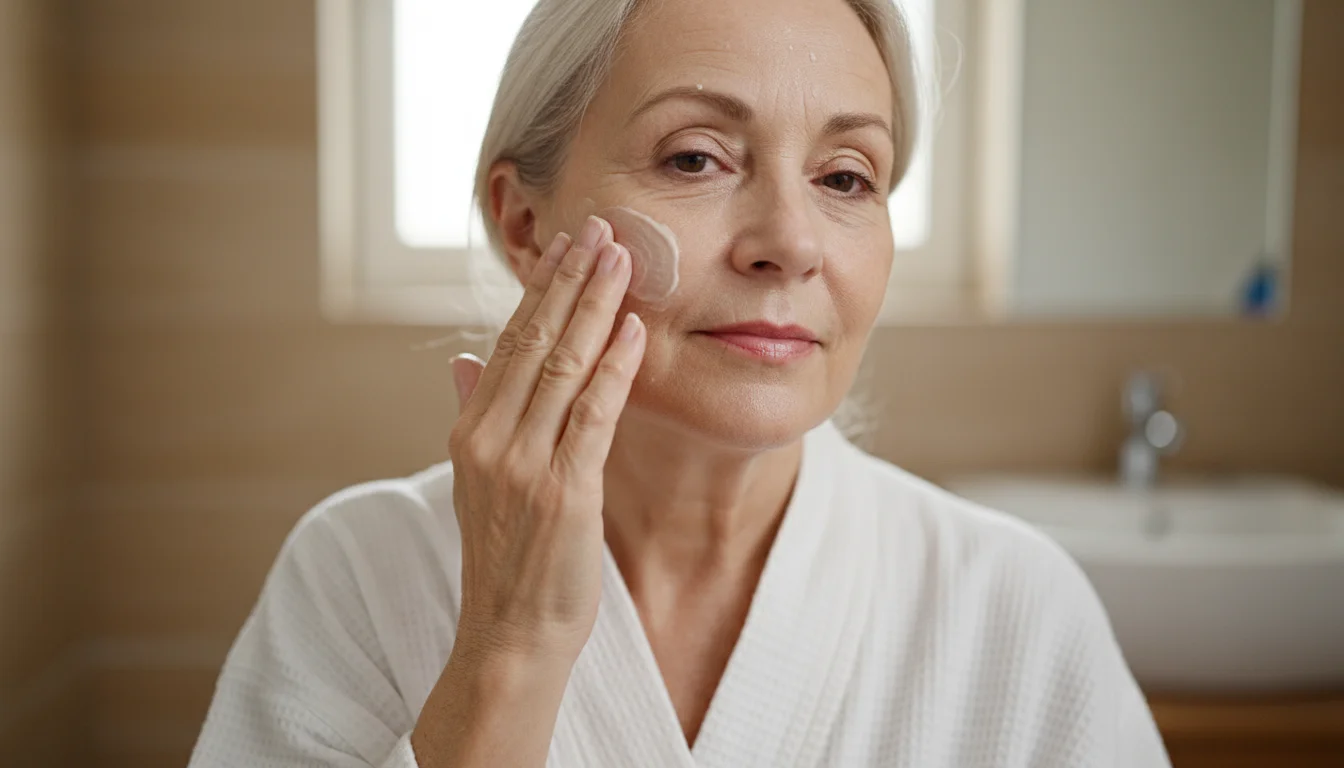
Step 1: Cleanse with Care
The goal of cleansing is to remove dirt and impurities without stripping your skin of its essential natural oils. As we age, our oil glands become less active, so preserving these oils is critical to preventing dryness.
- Use Lukewarm Water: Hot water can be very drying and irritating to mature skin. Always opt for lukewarm water for both your face and body.
- Choose a Gentle, Hydrating Cleanser: Look for cleansers that are soap-free and described as “hydrating,” “mild,” or “for sensitive skin.” Creamy or milky cleansers are often better choices than foaming ones, which can be harsh. Avoid products with fragrances, alcohol, and dyes.
- Don’t Scrub: Use your fingertips to apply the cleanser in gentle, circular motions. Avoid using rough washcloths or abrasive brushes on your face. When you’re done, pat your skin dry with a soft towel—never rub.
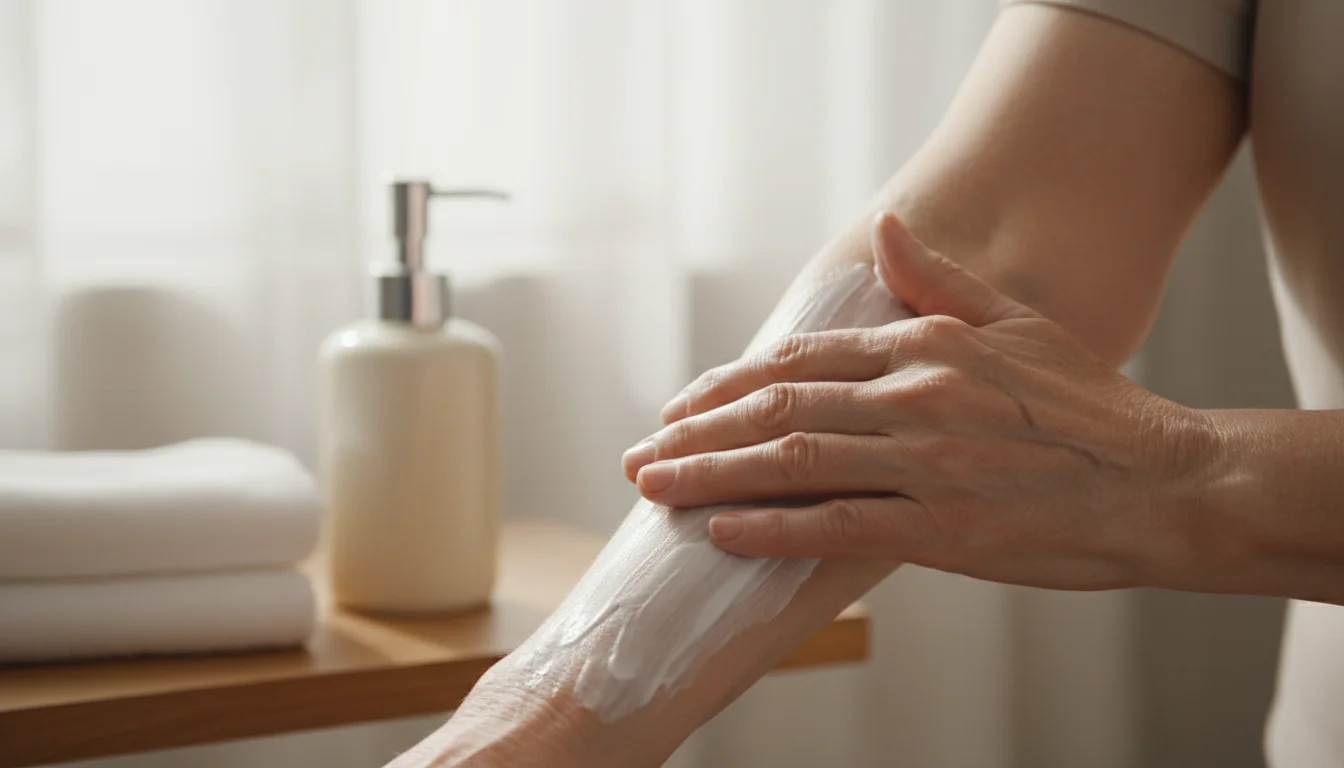
Step 2: Moisturize Generously and Often
Moisturizing is arguably the most important step for senior skin. A good moisturizer locks in hydration, supports the skin’s protective barrier, and soothes dryness.
- Apply to Damp Skin: The best time to apply moisturizer is right after cleansing, when your skin is still slightly damp. This helps to trap water in the surface layers of the skin, making the product more effective.
- Select the Right Formula: Look for thicker creams or ointments rather than thin lotions. Key ingredients to look for include ceramides (which help restore the skin barrier), hyaluronic acid (which draws moisture into the skin), and glycerin. For very dry skin, products containing petrolatum can be extremely effective at preventing water loss.
- Don’t Forget Your Body: Your arms, legs, back, and feet need moisture, too. Make it a habit to apply a good body cream after every bath or shower.
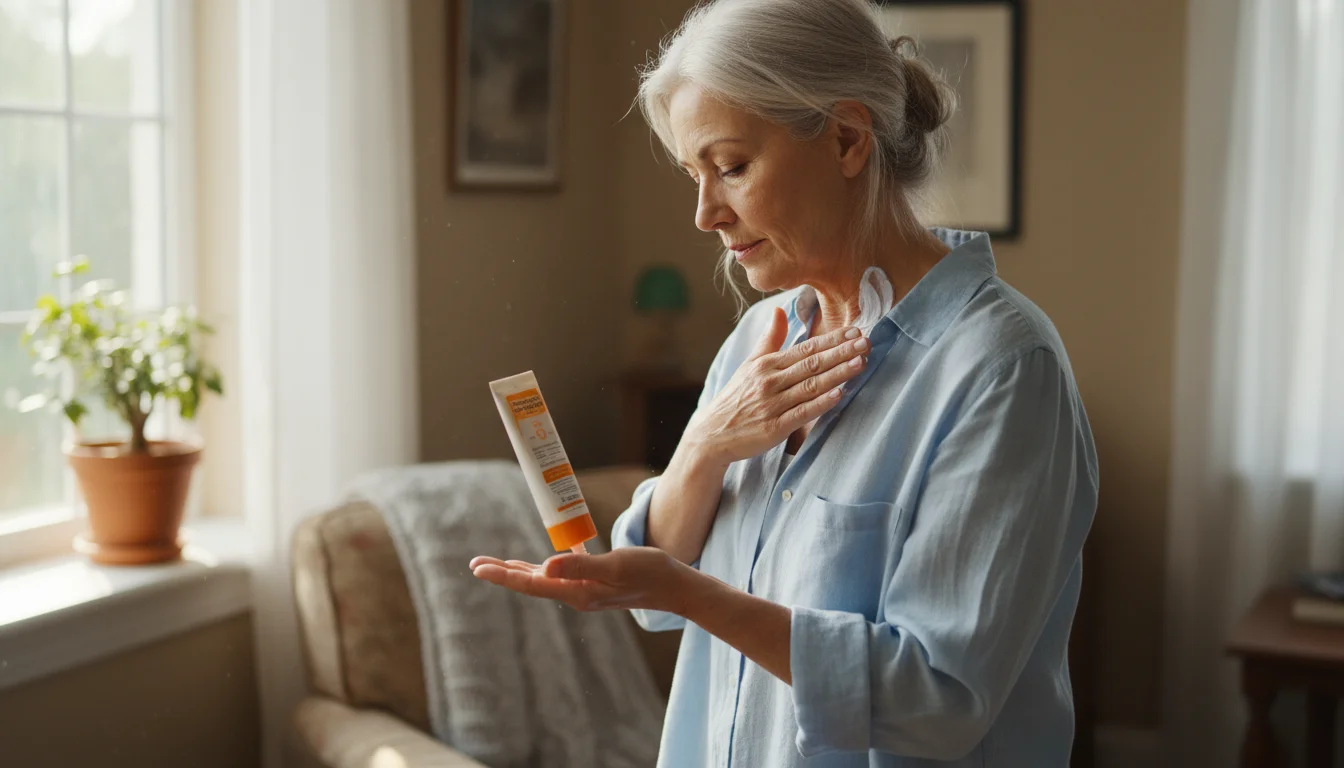
Step 3: Protect from the Sun Every Single Day
Sun protection is the most powerful of all anti-aging tips and is crucial for preventing skin cancer. Sun damage is cumulative over your lifetime, but it’s never too late to start protecting your skin.
- Use Broad-Spectrum Sunscreen: Choose a sunscreen that offers “broad-spectrum” protection, meaning it blocks both UVA (aging) and UVB (burning) rays.
- Aim for SPF 30 or Higher: For daily use, SPF 30 is the recommended minimum. If you plan to spend extended time outdoors, consider SPF 50.
- Make It a Daily Habit: Apply sunscreen every morning, regardless of the weather. UV rays can penetrate clouds and windows. Apply it to all exposed skin, including your face, neck, ears, and the backs of your hands. Reapply every two hours if you are outdoors.
- Consider Protective Clothing: Wide-brimmed hats, sunglasses, and long-sleeved shirts provide an excellent and reliable form of sun protection.
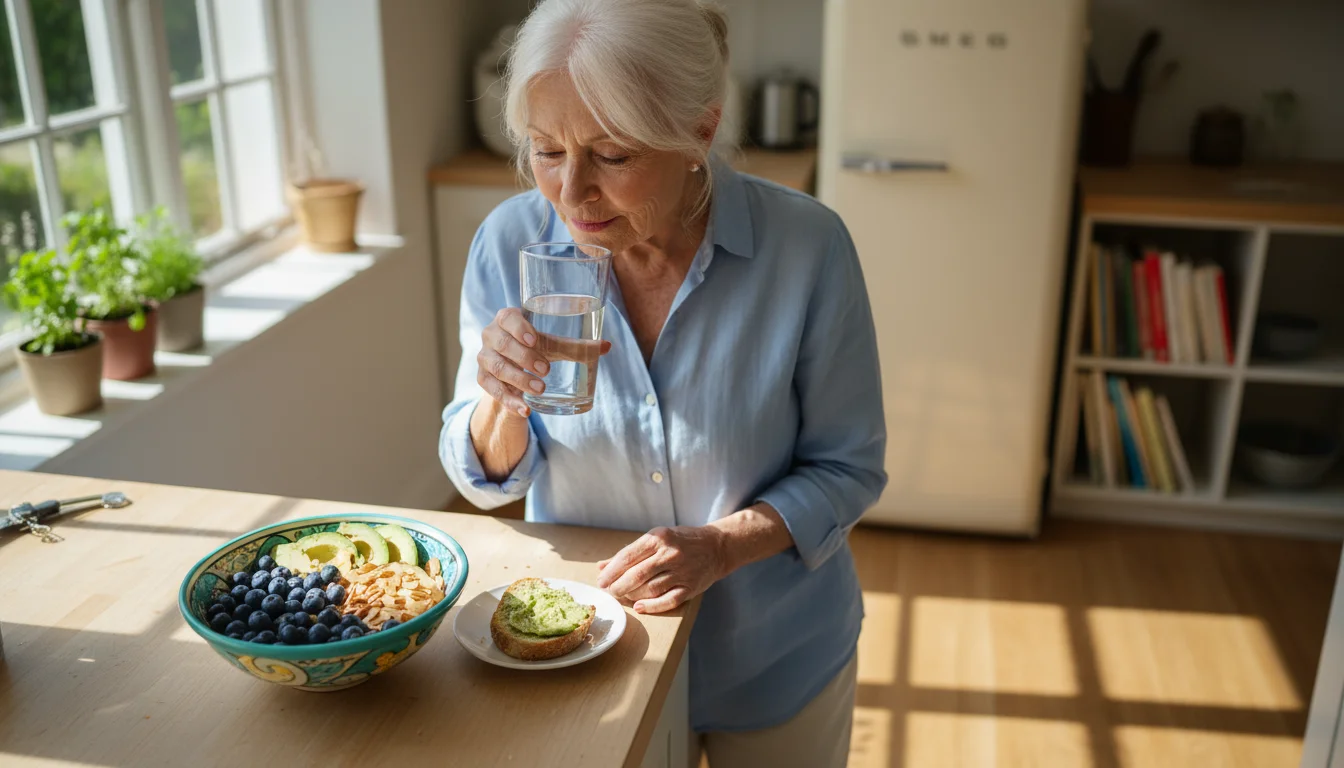
Step 4: Nourish Your Skin from the Inside Out
What you eat and drink has a direct impact on your skin’s health. A balanced diet supports your skin’s ability to repair itself.
- Stay Hydrated: Drink plenty of water throughout the day. Dehydration can make your skin look and feel dry and dull.
- Eat a Nutrient-Rich Diet: Focus on foods rich in antioxidants, which help protect your skin from damage. Excellent choices include berries, leafy greens (like spinach and kale), tomatoes, and nuts. Healthy fats, found in avocados, olive oil, and fatty fish like salmon, are also essential for keeping skin supple.
—

Key Signs It’s Time to Consult a Doctor
Your skin care routine is an excellent tool for health maintenance, but it is not a substitute for professional medical care. It is vital to know when a skin issue requires the attention of a physician or a dermatologist. Do not delay in seeking professional advice if you notice any of the following red flags.
Always consult a doctor if you observe:
- A Mole or Spot That Changes: Use the “ABCDEs” of melanoma as a guide. See a doctor if a mole is Asymmetrical, has an irregular Border, changes in Color, has a Diameter larger than a pencil eraser, or is Evolving (changing in any way—size, shape, texture, or if it starts to bleed or itch).
- A Sore That Does Not Heal: If you have a cut, sore, or rough patch that doesn’t heal within a few weeks, it needs to be examined. This can be a sign of certain types of skin cancer.
- Persistent Itching or a Rash: While often caused by dry skin, severe or persistent itching that doesn’t resolve with moisturizer could indicate an underlying condition, such as eczema, an allergic reaction, or even an internal health issue.
- Unexplained, Widespread Bruising: As we age, our skin becomes thinner and we may bruise more easily. However, if you notice frequent, large bruises appearing without a clear cause, it’s important to mention it to your doctor, as it can be a sign of other medical conditions.
- Painful Blisters, Growths, or Lumps: Any new growth on or under the skin that is painful, growing rapidly, or seems unusual should be evaluated by a healthcare professional immediately.
- Signs of Infection: If a cut or sore becomes increasingly red, swollen, warm to the touch, or starts draining pus, it may be infected and require medical treatment.
Regular skin checks are a proactive part of your health care. The Centers for Disease Control and Prevention (CDC) advocates for preventative health screenings for older adults. It is highly recommended to have a full-body skin examination by a dermatologist at least once a year, or more frequently if you have a history of skin cancer.
—

Making It a Part of Your Daily Routine
The most effective senior beauty routines are the ones you can stick with consistently. The key is to keep it simple and integrate it seamlessly into your existing habits. A complicated, multi-step process is more likely to be abandoned.
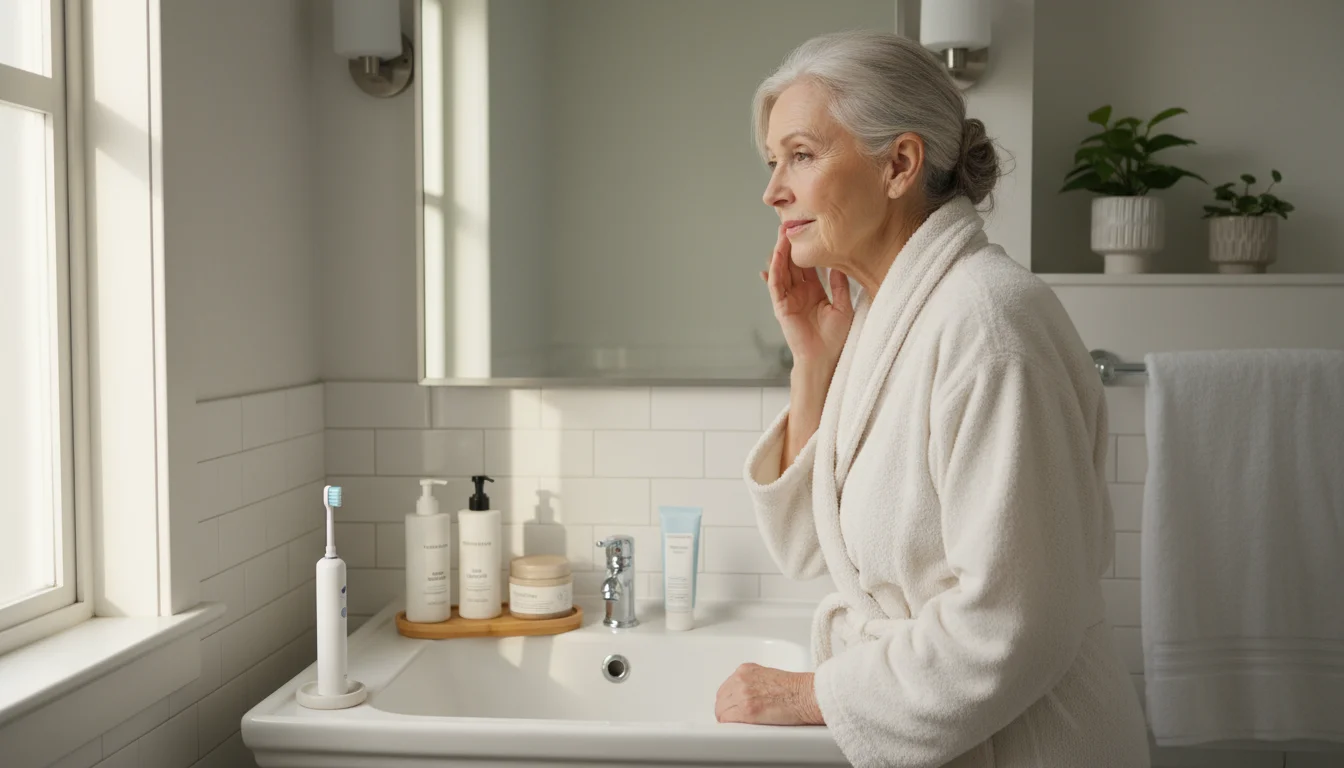
Tips for Building a Lasting Habit:
1. Keep It Simple: A great routine doesn’t need ten different products. Focus on the core three: a gentle cleanser, a rich moisturizer, and a broad-spectrum sunscreen. This “cleanse, moisturize, protect” mantra is easy to remember and highly effective.
2. “Habit Stack” Your Routine: Link your new skin care steps to something you already do every day. For example:
- Morning: After you brush your teeth, wash your face, apply moisturizer, and then put on sunscreen.
- Evening: After you change into your pajamas, wash your face and apply your nighttime moisturizer.
Connecting the new habit to an established one makes it feel automatic over time.
3. Place Products in Plain Sight: Keep your sunscreen next to your toothbrush or by the front door so you can’t miss it before you leave the house. Keep your hand cream on your nightstand to apply before bed. Visual cues are powerful reminders.
4. Make It Pleasurable: Choose products with textures and scents (if you are not sensitive to them) that you enjoy. Think of these few minutes as a peaceful, meditative moment for yourself. Taking this time is an investment in your health and well-being.
5. Be Patient and Consistent: It takes time to see and feel the benefits of a good skin care routine. Don’t get discouraged if you don’t notice a dramatic change overnight. Consistency is far more important than perfection. The goal is long-term skin health, comfort, and protection.
—

Frequently Asked Questions
1. Are expensive “anti-aging” skin care products better for seniors?
Not necessarily. The price of a product is not a reliable indicator of its effectiveness. Many affordable, drugstore brands offer fantastic, dermatologist-recommended products. What truly matters are the ingredients. Look for products with proven, gentle ingredients like ceramides, hyaluronic acid, glycerin, zinc oxide, and titanium dioxide. Focus on finding a simple cleanser, moisturizer, and sunscreen that your skin tolerates well, rather than spending a lot on products with exotic-sounding claims.
2. What’s the real difference between a “sunscreen” and a “sunblock”?
These terms are often used interchangeably, but they refer to two different types of sun protection. Sunscreen typically refers to chemical formulas that absorb UV radiation and convert it into heat. Sunblock refers to physical or mineral formulas, most often containing zinc oxide and/or titanium dioxide, that create a physical barrier to block UV rays. Many dermatologists recommend physical sunblocks for mature and sensitive skin, as they are less likely to cause irritation.
3. Can lifestyle changes like diet and sleep really make a difference for my skin after 60?
Absolutely. While topical products are important, your overall lifestyle plays a huge role in skin health at any age. Staying well-hydrated by drinking enough water is fundamental. A balanced diet rich in antioxidants, vitamins, and healthy fats provides the building blocks for skin repair. Furthermore, getting adequate sleep is when your body, including your skin, does most of its restorative work. Limiting alcohol and stopping smoking are also two of the most impactful changes you can make for your skin and overall health.
4. Does Medicare cover visits to a dermatologist?
This is a common and important question. In general, Medicare Part B (Medical Insurance) will cover a visit to a dermatologist if it is considered medically necessary to diagnose or treat a specific medical condition. This includes things like checking a suspicious mole, managing a chronic skin condition like eczema or psoriasis, or treating a skin infection. However, services that are considered purely cosmetic—such as treatments for fine lines, wrinkles, or cosmetic mole removal—are typically not covered. It’s always best to check your specific coverage. For detailed information on what is covered, refer to the official source at Medicare.gov or speak with a Medicare representative.
Disclaimer: This article is for informational purposes only and does not constitute medical advice. The content is not intended to be a substitute for professional medical advice, diagnosis, or treatment. Always seek the advice of your physician or other qualified health provider with any questions you may have regarding a medical condition.
Authoritative health information for seniors is provided by the National Institute on Aging (NIA) and the Centers for Disease Control and Prevention (CDC).
For insurance and medical coverage questions, refer to Medicare.gov. For mental health support, consult the National Institute of Mental Health (NIMH).
|
Fact-Checked Content
Our editorial team reviews all content for accuracy and updates it regularly. Learn about our editorial process →
|








